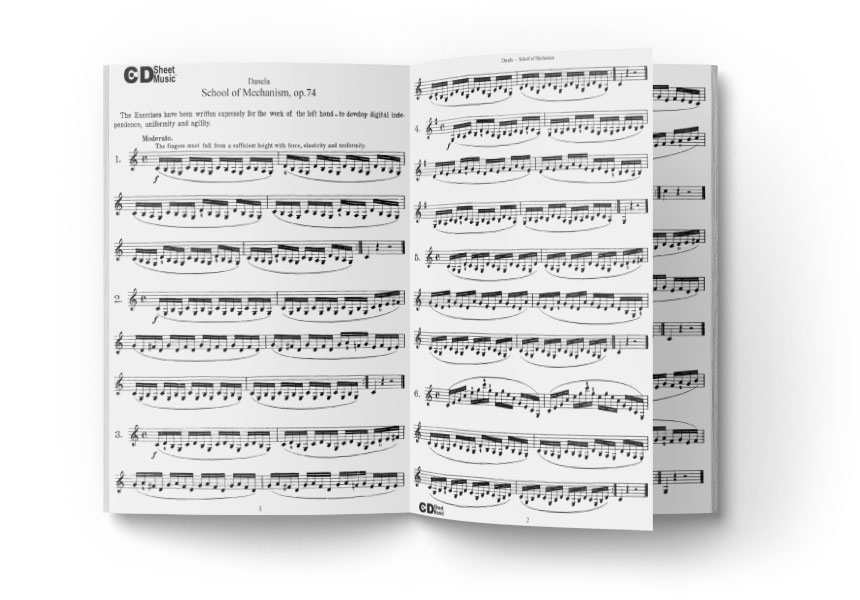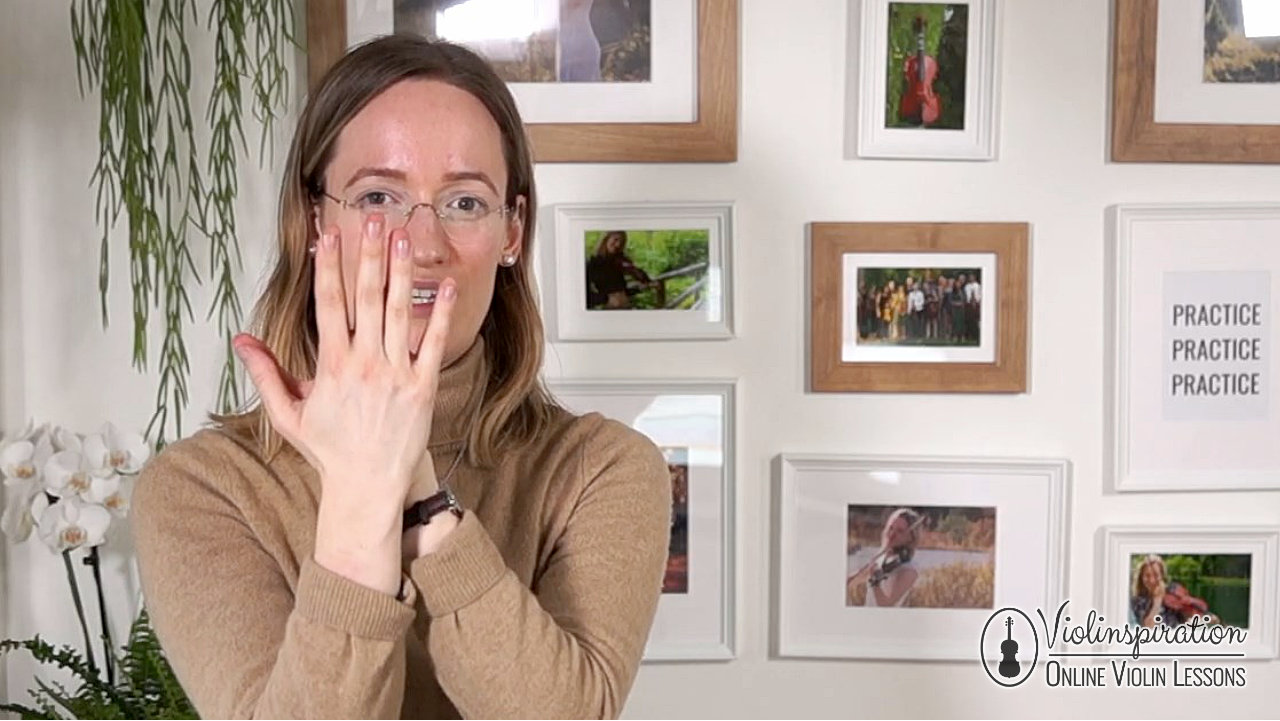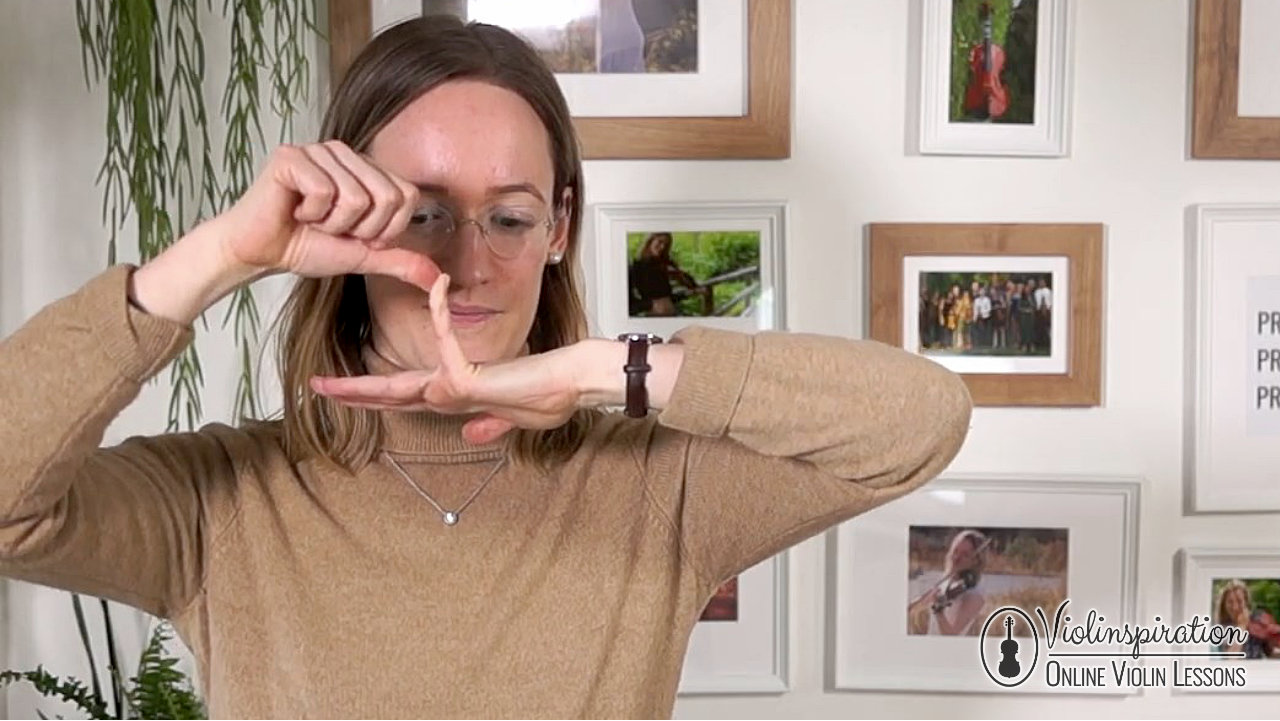Learn what finger dexterity is, why it is important and how to work on it.
Have you ever wondered how skillful players can play those fantastically fast passages? And not only fast but also accurately? Have you wished you could do that?
Or have you felt while practicing that your fingers just won’t do what you want them to? That they trip over each other like someone with two left feet?
What you need for both is better finger dexterity. And good practice can never start too early!

Download for Free
School of Mechanism by Dancla
What Does Finger Dexterity Mean?
Finger dexterity is the ability to move your fingers exactly as you want to, at the right time, to the right place, and without straining or putting them under too much stress, or them cramping up.
Playing the violin is a whole-body activity, and it is important to pay attention to the rest of the body, but here we will primarily focus on the hands and fingers.
How Does Finger Dexterity Work?
Finger dexterity is achieved by consistent practice. Your fingers learn what you show them. Giving your fingers clear instructions and letting them learn at their own pace does work. Trust that you will be able to do it if you don’t expect to be there already when starting and are willing to make the journey.
It is important to remember that your muscles are asked to do movements that they have never done before. Everything is new to your fingers, just as it is new to you. I find it useful to think of the fingers as devoted little creatures that want to serve you and getting angry at them isn’t going to help. They will listen to what you tell them and reproduce it. If what you tell them is unclear, they will repeat that. If you can be precise in your instructions, they will also be precise.
How Can I Improve My Finger Coordination?
You can easily improve your finger coordination by warming up your hands before playing, practicing slowly, practicing difficult parts on their own and breaking these parts into small steps, and relaxing during playing. Following these steps daily will make it easier for you to play the violin or any other instrument.
Let’s have a closer look at each point separately.
1. Warm Up Your Hands

Even though it doesn’t look like it, playing the violin is akin to being an athlete. The work your hand and finger muscles do is a complete workout, and you need to treat it accordingly. This is why it is important to warm up before starting to play. If you want to avoid injury to your hands, you need to get the blood flowing into them, to wake them up. I will list some exercises for this below.
2. Practice Slowly
To give precise instructions to your fingers is to let them be clear on exactly what each movement is. Give them clear tasks and do it slowly for as long as it takes for each finger until it is clear where, how, and when it is moving. I recommend playing scales or exercises slowly. And I mean very slowly, where you can take your time to prepare each finger for where it is about to go. You can start to move it a little bit before you’re going to play the note so that it is completely ready to land in the right place. If necessary, it is OK to stop and find where your finger is going before putting it down and then playing. Only increase your speed once you feel the coordination is working.
When you get it right, repeat this until you can do it with ease. Practice builds habits, what you repeat is what your hands learn.
3. Practice Difficult Parts Step-by-Step
If you want to play a passage fast, first practice it slowly and speed it up step by step, making small increases. If a particular part causes extra problems, for example, a particular string crossing or a shift, practice this part separately from the rest of the passage. Practice the left hand on its own, then the right hand on its own, and then put them together. Then repeat, repeat, repeat.
4. Relax While You Practice
Before starting any of these exercises—or playing anything—make sure you warm-up and your hand is soft and relaxed. During the exercise, from time to time put your awareness back on this. Is my hand still soft? Or am I grasping? Then, if you notice any undue tension in the left hand, relax it, and see if you can do the same thing with more ease. Of course, there must be some tension in the hand otherwise it would just go floppy, but we tend to grip too hard which can cause injury. If you feel any pain, stop and rest. Never push past your natural range of motion, allow your hands to stretch by themselves.
11 Tips For Better Finger Dexterity
Just like in a fitness practice session, we can divide the activities into warm-ups and building the strength of the muscles. Below are tips for both parts. You can also have a look at my video about stretching before and after a practice session with exercises that will help you prevent injuries and relieve the pain you may experience.
Exercises for Warming Up
- Shake out your hands, then rub your palms together. This will make them feel tingly.
- Squeeze your fist, then stretch your hand out, and repeat a few times. Gently extend your hand in between each stretch.
- Flick each finger, first holding it against the thumb, as if you were flicking a crumb away.
- Rotate your wrists a few times in each direction.
- Rotate your shoulders a few times each way—backward and forward.
- Stretch during your practice also, stop every so often and make sure you’re not getting stuck into one position. Stretch your whole body.
Strengthening Exercises
1. Tapping on the Fingerboard
Tap one finger at a time several times. You can use a rhythm or a rhyme to make this more fun.
2. Exercising the Fourth Finger

Building finger dexterity is especially important for the fourth finger. This tends to be the weakest for everyone, so try playing the fourth finger instead of open strings in scales, making sure not to overdo it. This also gives you the flexibility to use different fingerings in your pieces.
3. Trills
Trills are like tapping the fingerboard, but now you’re making a nice sound at the same time. You hold down one note and play the note above on and off, putting down and lifting the next finger. You can practice it with a metronome or challenge yourself to tap as fast as possible.
4. Left-hand Pizzicato
This offers a different range of motion and increases your dexterity. Start on open strings, then try holding down a note with the first finger and plucking with the third and fourth fingers.
5. Playing Scales and Left-hand Exercises
Scales and exercises like arpeggios, broken thirds, and etudes for your current level will also help strengthen your left hand. Some exercises are specially designed for strengthening the fingers, such as Dancla, School of Mechanism.

Download for Free
School of Mechanism by Dancla
























